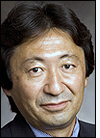Electronics manufacturer NEC and Japanese container company Toyo Seikan Kaisha have developed an RFID-enabled bottle cap prototype, with plans to sell the caps and RFID interrogators for commercial beverage container use in 2008. The cap, embedded with a 2.45 GHz passive RFID tag, would offer bottle companies a means to provide product and promotional information to consumers purchasing items.
After debuting the cap in Japan, NEC eventually intends to market the bottle cap for use throughout the world, according to Taiki Matsuo, general manager of NEC’s Ubiquitous Solution Promotion division. An RFID inlay would be embedded in the cap during the manufacture of polyethylene terephthalate (PET) plastic bottles, such as those used for carbonated beverages. NEC would provide the inlay, consisting of an RFID chip and antenna, which would be embedded into the plastic cap of each bottle. The tag would be manufactured with a unique ID number, pre-encoded to the tag’s 128 bits of read-only memory, but the tag would also feature 128 bits of read-write memory so other details could be written to the chip as well, such as a description of the bottle’s contents or details about a product promotion. In addition, NEC is developing an RFID interrogator for this solution.
By using an in-store RFID interrogator to read a cap’s tag, a customer could learn about a drink’s ingredients before purchasing it. In other situations, information related to a contest or other promotional event could be written to the chip, enabling consumers to present a beverage to an interrogator at the point of sale to discover if they had won a prize.
The 2.45 GHz tag complies with the ISO 15963 air-interface standard, is about the same diameter as the cap and works well around liquids, with a maximum read range of 4 inches. “We developed our prototype using 2.45 GHz RFID passive tags,” Matsuo says, “because for ILT [item-level tracking], the size of RFID tags is extremely important, and also, it could work better around metal and water than 13.56 MHz and 900 MHz.” The cap is being designed so the chip and antenna, which contain metal, could be removed from the cap at the time of disposal. This may be required in Japan, where recycling regulations mandate that metal be separated from a plastic product.
Beverage companies could also use the RFID-enabled caps to monitor the movement of their products, tracking where the beverages are in the store and how quickly they are selling. “NEC and Toyo Seikan believe that the system can enable beverage makers to efficiently manage the inventory and enhance their promotion activities,” Matsuo says. In the case of defective products or recalls, he adds that “the beverage company’s response could be improved because the system can recognize the identification of each bottle, such as which factory it was made at.”
NEC expects Japan Crown Cork Co., a Toyo Seikan group company, to begin mass production of the bottle cap in 2008. Although no users have yet been signed up, Matsuo notes, “NEC, together with Toyo Seikan, is approaching beverage and food makers to develop new applications.”
The system’s RFID interrogators, Matsuo says, will be priced lower than similar readers sold in limited numbers for supply chain management. “The reader-writer in this system,” he explains, “is expected for usage in CRM [customer relationship management]. Therefore, many more units are expected to be sold because our target of selling this product is for consumer [applications], and the price could be lowered by the effect of volume production.”
Matsuo says he expects the savings generated by increased beverage sales due to promotional applications to absorb any added cost related to the RFID tags. He also believes it would be cheaper to use RFID to inform consumers than to print the same information on each cap. “We estimate that the cost reduction of the promotion could absorb the increased cost of RFID tags,” he says, “by getting more effective results in promotion activities.” He notes that the tracking recalled products through the use of the RFID tags would save also expenses for the beverage company.


